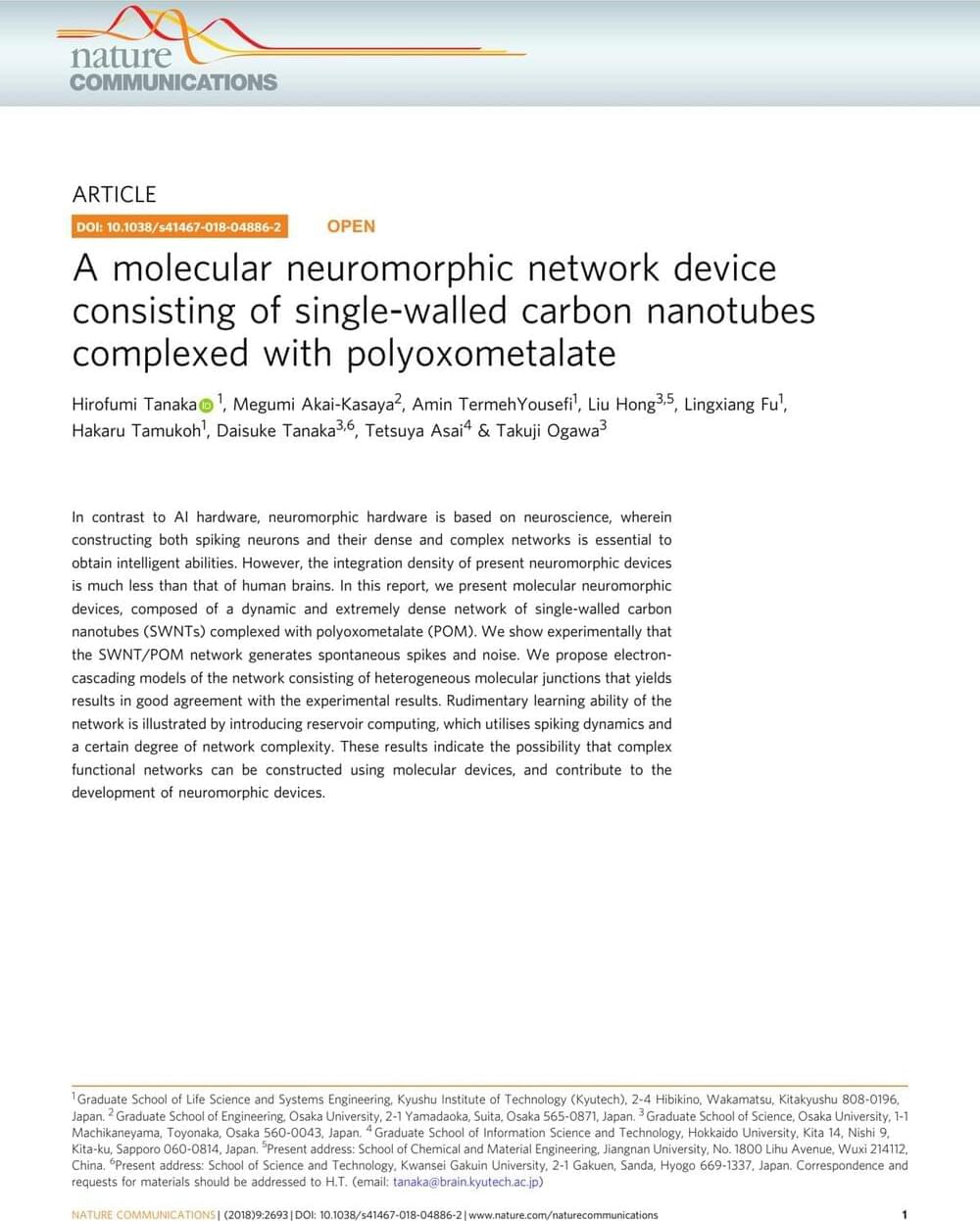Molecular network neuromorphic device based on carbon nanotubes.
Shared with Dropbox.


Matt on progress toward AGI in 2022 via OPenCog Hyperon.
A statically generated blog example using Next.js and WordPress.


An international team of researchers stumbled upon an exploding supernova in a distant spiral galaxy, using data from the first year of interstellar observation by the James Webb Space Telescope.
The James Webb Space Telescope (JWST or Webb) is an orbiting infrared observatory that will complement and extend the discoveries of the Hubble Space Telescope. It covers longer wavelengths of light, with greatly improved sensitivity, allowing it to see inside dust clouds where stars and planetary systems are forming today as well as looking further back in time to observe the first galaxies that formed in the early universe.

As scientist extraordinaire and author of an empire of science-fiction books, Arthur C. Clarke is one of the farthest-seeing visionaries of our time. His pithy quotations tug harder than those of most futurists on our collective psyches for their insights into humanity and our unique place in the cosmos. And none do so more than his famous Third Law: “Any sufficiently advanced technology is indistinguishable from magic.”
This observation stimulated me to think about the impact the discovery of an extraterrestrial intelligence (ETI) would have on science and religion. To that end, I would like to immodestly propose Shermer’s Last Law (I don’t believe in naming laws after oneself, so as the good book says, the last shall be first and the first shall be last): “Any sufficiently advanced ETI is indistinguishable from God.”
God is typically described by Western religions as omniscient and omnipotent. Because we are far from possessing these traits, how can we possibly distinguish a God who has them absolutely from an ETI who merely has them copiously relative to us? We can’t. But if God were only relatively more knowing and powerful than we are, then by definition the deity would be an ETI!

Julian Barbour, physicist, talks the illusion of time, the origin of the universe, and what is reality. He also discusses his newest book, “The Janus Point: A New Theory of Time,” which makes the radical argument that the growth of order drives the passage of time — and shapes the destiny of the universe.
Read “The Janus Point”: https://www.basicbooks.com/titles/julian-barbour/the-janus-point/9780465095469/
Julian Barbour’s Website: http://www.platonia.com/
Julian Barbour is a physicist with research interests in quantum gravity and the history of science. Since receiving his PhD degree on the foundations of Albert Einstein’s general theory of relativity at the University of Cologne in 1968, Barbour has supported himself and his family without an academic position, as an author and translator.
Watch more Closer To Truth interviews with Julian Barbour: https://bit.ly/3eIW96E
Register for free at closertotruth.com for subscriber-only exclusives: http://bit.ly/2GXmFsP
Closer to Truth presents the world’s greatest thinkers exploring humanity’s deepest questions. Discover fundamental issues of existence. Engage new and diverse ways of thinking. Appreciate intense debates. Share your own opinions. Seek your own answers.

According to reports from Spanish newspaper El País, researchers have discovered a way to speed up, slow down, and even reverse quantum time by taking advantage of unusual properties within a quantum world in specific ways. It’s a huge breakthrough, which the researchers have detailed in a series of six new papers featured in Advancing Physics.
The papers were originally published in 2018, and they detail how researchers were able to rewind time to a previous scene, as well as even skip several scenes forward. Being able to reverse and even control quantum time is a huge step forward, especially as we’ve seen increasing movements into quantum simulators.
The realm of quantum physics is a complex one, no doubt, and with analog quantum computers showing such promise at solving intense problems, it only seens fitting that research into controlling and reversing quantum time would prove so fruitful. The researchers say that the control they can acquire on the quantum world is very similar to controlling a movie.